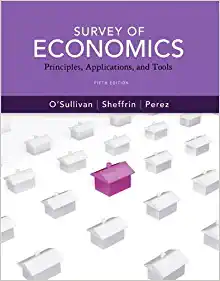Introduction to Derivative Securities. Show me the process please.
1) JP Morgan Chase writes a fonvard contract to sell 10 million pounds sterling at the delivery price 2) 3l 4l 5) of $1.6247 per pound in 30 days' time. At the end of the contract the spot exchange rate was $1.65 per pound. What was the prot to JP Morgan Chase? The current spot price of a non-dividend paying stock is $65, while the simple interest rate is 4.50 percent per year. Consider a forward contract written on this stock with a maturity of 90 days. a) Calculate the forward price. b) What is the value of the contract? c) General Electric wants a 90day fonvard contract with the delivery price set at $60. What is the value of this contract? A one-year fonvard contract is written on a dividend-paying stock. The current stock is $63.375 and it is known that the stock will pay a dividend of $1.50 per share in one month and a dividend of $2 per share in seven months' time. The price of a one-month Treasury bill is 0.9967, a seven- month Treasury bill 0.9741, and a twelve-mth Treasury bill 0.9512, assuming a face value of $1. What is the fonvard price? In a particular day, the September S&P 500 stock index futures was priced at 960.50. The S&P 500 index was at 956.49. The contract expires 73 days later. a) Assuming continuous compounding, suppose the risk-free rate is 5.96 percent and the dividend yield on the index is 2.75 percent. Is the futures overpriced or underpriced? b) Assuming annual compounding, suppose the riskfree rate is 5.96 percent and the future value of dividends on the index is $5.27. Is the futures overpriced or underpriced? An investor holds title to an asset worth 125.72. To raise money for an unrelated purpose, the investor plans to sell the asset in nine months. The investor is concerned about uncertainty in the price of the asset at that time. The investor learns about the advantages of using fonvard contracts to manage this risk and enters into such a contract to sell the asset in nine months. The risk-free interest rate is 5.625 percent. a) Determine the appropriate price the investor could receive in nine months by means of the fonvard contract. b) Suppose the counterparty to the forward contract is willing to engage in such a contract at a fonvard price of 140. Explain what type of transaction the investor could execute to take advantage ofthe situation. Calculate the rate of return (annualized), and explain why the transaction is attractive. c) Suppose the fonlvard contract is entered into at the price you computed in Part a). Two months later, the price of the asset is 118.875. The investor would like to evaluate her position with respect to any gain or loss accrued on the fonvard contract. Determine the market value of the fonvard contract at this point in time from the perspective of the investor in Part a). d) Determine the value of the fonvard contract at expiration assuming the contract is entered into at the price you computed in Part a) and the price of the underlying asset is 123.50 at expiration. Explain how the investor did on the overall position of both the asset and the fonvard contract in terms of the rate of return. 6) Assume that a security is currently priced at $200. The risk-free rate is 5 percent. a) A dealer offers you a contract in which the fonNard price of the security with delivery in three months is $205. Explain the transactions you would undertake to take advantage of the situation. b) Suppose the dealer were to offer you a contract in which the forward price of the security with delivery in three months is $198. How would you take advantage of the situation? 7) The euro currently trades at $1.0231. The dollar risk-free rate is 4 percent, and the euro risk-free rate is 5 percent. Six-month forward contracts are quoted at a rate of $1.0225. Indicate how you might earn a risk-free profit by engaging in a fonvard contract. Clearly outline the steps you undertake to earn this risk-free profit








